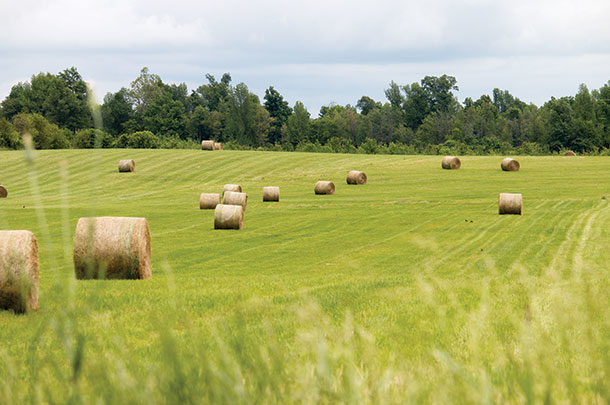AGEE: After getting my master’s in forage agronomy from the University of Georgia, I worked as a research coordinator at the University of Georgia doing fieldwork and forage analysis, then to the Kerr Center in Oklahoma as a forage specialist, then to University of Arkansas Extension before going to Pennington Seed as a forage agronomist, where I’ve been for 14 years.

Even though I’ve had different job titles, I’ve essentially been doing the same thing for 25 years – working with producers (primarily cattlemen) to improve their operations. Pasture management is as much an art as it is a science, and I’ve learned as much from the producers I’ve worked with as they’ve learned from me – probably more.
Through your years and work in the forage industry, what trends have you seen most recently?
AGEE: Probably an increased awareness of grazing management. Improvements in fencing and water sources have helped this, but
grazing workshops conducted at the state level have helped put it all together, and with ever-increasing land costs, getting the most out of your land has become critical.
Some producers have taken their pasture management skills and begun to finish animals on pasture and market their product themselves through on-farm stores and online. It’s still just a blip compared to the total meat industry, but the trend is slow and steady.
Where do you anticipate the focus of forage research to be in the next 10 years?
AGEE: Forage yield, quality and persistence will always be at the forefront – essentially, any trait that will improve margins in a production system.
To that end, if the general public ever gets over its fear of GMOs, there is great potential there. We can’t continue to paint GMOs with this broad evil brush.
Each genetic manipulation must be evaluated individually and the risks or benefits fleshed out. Increased drought tolerance, forage quality, nitrogen-use efficiency and insect/disease resistance are just a few potential improvements. It’s not a silver bullet but could be an important tool.
Forage research has become grant-based, rather than federally funded. Would you say that lends to corporate-led interests rather than producer-led interests?
AGEE: Forage research has really never been highly funded, but as federal dollars flow toward more systems research, forages are an integral part of most systems and will benefit.
Producer interests tend to drive corporate interests as the marketplace decides winners and losers, so in forages, at least, any negative effect from changing funding sources will be minor.
What type of member does AFGC serve best?
AGEE: At the risk of sounding self-serving, AFGC serves any-type member well. We’re primarily an educational organization and offer opportunities to everyone from the beginning grazier to the seasoned grass-fed grower and even folks who just have an interest in grasslands and forage agriculture; AFGC offers something for everyone.
Also, I don’t think there is another national organization that is as cheap to join as AFGC. When someone joins their state-affiliate council, they also become a member of the national organization – all for around 30 bucks.
What opportunities lie ahead in forage production? Are there noticeable swings in production or harvest techniques?
AGEE: Our old opportunities are still our new opportunities. Soil testing, weed control, fertility management and grazing management are still the fundamentals. These are the most important factors in forage production, and they are mostly under our control. Manage these fundamentals, and your production will move to a higher level.
What events and services does AFGC provide growers?
AGEE: State-affiliate councils offer great forage programs and newsletters throughout the year, as does the national organization. At AFGC’s annual meeting, along with the latest in forage research, there is the forage spokesperson contest, emerging scientist competition, a hay judging contest, Youth in Grazing Management essay competition and the Forage Bowl, which is a Jeopardy-type quiz competition between college teams made up of students studying agriculture.
The annual awards program recognizes those individuals who have made outstanding contributions to forage and grassland agriculture. AFGC also administers the Certified Forage and Grassland Professional (CFGP) certification program, as well as the Certified Forage and Grassland Apprentice program for recent grads just beginning their forage careers.
All of these programs and competitions are great, but a member who attends a state or national meeting can interact with all sorts of other forage-minded individuals from all sides of forage agriculture. This fellowship is really what drives our volunteer organization and keeps it moving forward. FG
PHOTO: Field of round bales. Photo by Lynn Jaynes

-
Lynn Jaynes
- Editor
- Progressive Forage Grower
- Email Lynn Jaynes











